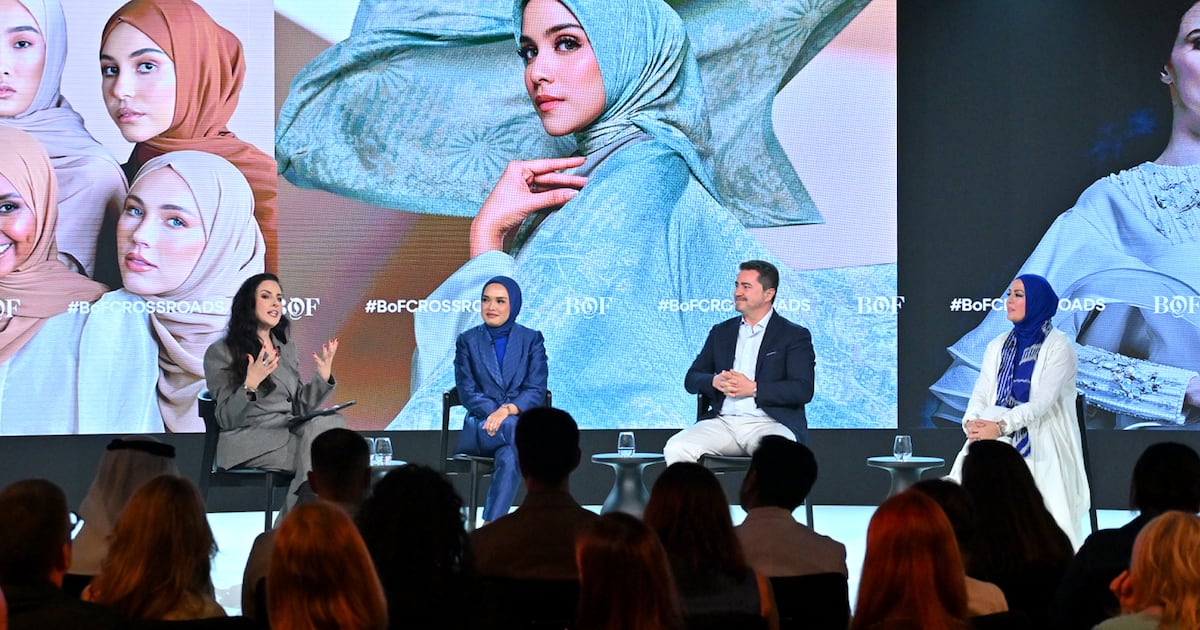
The author has shared a Podcast.You will need to accept and consent to the use of cookies and similar technologies by our third-party partners (including: YouTube, Instagram or Twitter), in order to view embedded content in this article and others you may visit in future.
Listen to and follow the BoF Podcast:Apple Podcasts | Spotify | Overcast
Background:
Itâs a pivotal moment for modest fashion. Spending by Muslim consumers on fashion is projected to hit $428 billion by 2027, marking significant annual growth. Yet despite booming demand, modest fashion remains commercially fragmented and struggles for global recognition.
Emirati fashion designer Rabia Zargarpur founded her namesake brand after confronting the severe lack of modest clothing options in post-9/11 America. Driven by a personal need, she launched her brand from her grandfatherâs garage in Silicon Valley, determined to bring modest fashion to mainstream runways.
âIn 2000, you couldnât even find modest basics â long sleeves, or something that would cover your hips,â Zargarpur says. âThat was a huge aha moment for me. We are so neglected. Why isnât there a single label catering to the needs of our women? And so I took charge and created my brand, Rabia Z.â
Kerim Türe, founder of the Istanbul-based modest fashion e-tailer Modanisa, initially tried to convince existing brands to move online. When they declined, Türe took matters into his own hands, building a global e-commerce powerhouse from scratch.
âThe clothes we put on ourselves, a piece of fabric, itâs part of our identity, part of our self-confidence,â Türe says. âWe believe all women deserve to look their best without compromising their beliefs.â
For Linda Anggrea, founder of Indonesian modest fashion brand Buttonscarves and CEO of the Modinity Group, the absence of modest fashion brands in major Indonesian shopping malls was glaring. She seized the opportunity, growing her brand from a single scarf line to a multi-brand group with over 100 retail locations across Southeast Asia.
âWe want to feel good about ourselves, we want to feel comfortable,â Anggrea says. âIf we put that concept into whatever we are doing, it will easily translate into a good collection but still fit modest values.â
This week on The BoF Podcast, in a compelling conversation with Forbes Middle East presenter Sally Mousa, at BoF CROSSROADS 2025, Rabia Zargarpur, Kerim Türe, and Linda Anggrea explore the growing influence of modest fashion, discuss its evolving presence in mainstream markets, and outline the steps necessary for sustainable growth, authentic collaborations, and global recognition.
The author has shared a YouTube video.You will need to accept and consent to the use of cookies and similar technologies by our third-party partners (including: YouTube, Instagram or Twitter), in order to view embedded content in this article and others you may visit in future.
Key Insights:
- Authenticity is vital as modest fashion gains mainstream popularity. âThere needs to be authenticity and they need to understand our values and work with us. If they work with [us], they would have better solutions,â says Zargarpur. Highlighting the transparency of superficial engagement by mainstream brands she adds, âWeâre not just about caftans. All we see in the Ramadan collections and edits is the blingy caftan again, but weâre more than that. Weâre about sustainability, ethical practices, creativity and innovation. Why canât you make that kind of stuff for me the way you do for your other consumers?â
- The industry stands at a pivotal crossroads between short-term individual success and long-term collective growth. Anggrea underscores the importance of unity, even within her own brands: âWeâre at a crossroads whether we want to go fast alone or go far together. Each brand has its own voice, but we have one shared mission. That modest fashion is not only accepted, but actually expected in all fashion runways, global fashion week, and every retail space all around the world.â
- Supporting emerging designers is essential for the future of modest fashion. âWe need more and more brands coming from inside,â says Türe. âThe designers and the business people need to come together.â He adds, âWe are the colonised South. We need to bring our own branch to the world right now.â

